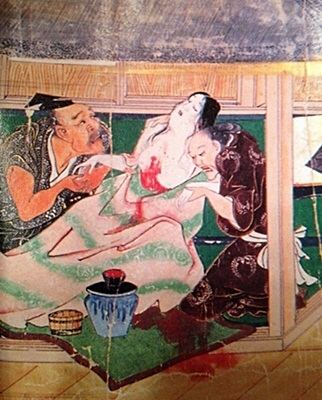Name Iwasa Matabei Died 1650, Tokyo, Japan | Parents Araki Murashige | |
 | ||
Popular Videos - MOA Museum of Art & Iwasa Matabei
Iwasa Matabei (Japanese: 岩佐 又兵衛, Iwasa Matabē; original name Araki Katsumochi 1578 – July 20, 1650) was a Japanese artist of the early Tokugawa period (1603–1867), who specialized in genre scenes of historical events and illustrations of classical Chinese and Japanese literature, as well as portraits. He was the son of Araki Murashige, a prominent daimyō of the Sengoku period who had been made to commit suicide, leaving Matabei to be raised with his mother's family name, Iwasa. Matabei's work was noted for its distinctive figures, with large heads and delicately drawn features, and he was effective both in colour and monochrome ink-wash painting, using an individual brush technique combining Tosa and Kanō elements.

Although trained by Kanō Naizen of the Kanō school, he was more influenced by the traditions of the Tosa school, and signed a late series of portraits of the Thirty-six Poetry Immortals (1640) commissioned by the shogun Tokugawa Iemitsu for a temple as "the artist Matabei of the later current from Tosa Mitsunobu". His work is often regarded as a major influence on the developing ukiyo-e school of painting, which is possibly because of confusion with a ukiyo-e artist character with the same name (Ōtsu no Matabei) in a play by Chikamatsu. Also, he used often to be attributed as the painter of a famous early ukiyo-e screen known as the Hikone screen, but this is now considered incorrect. In fact his "patrons ... were so high in the social hierarchy that it is hard to believe that Matabei could have created the Ukiyo-e tradition", and he is better regarded as a "great independent artist of the Tosa tradition".

His son Katsushige (d. 1673) was also a painter, known for dancing figures in a style like that of his father.


